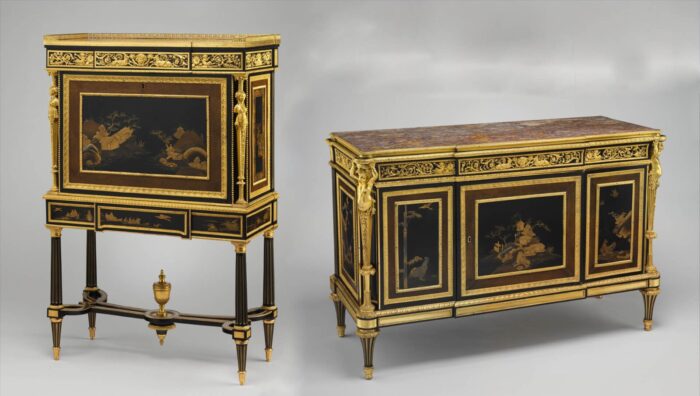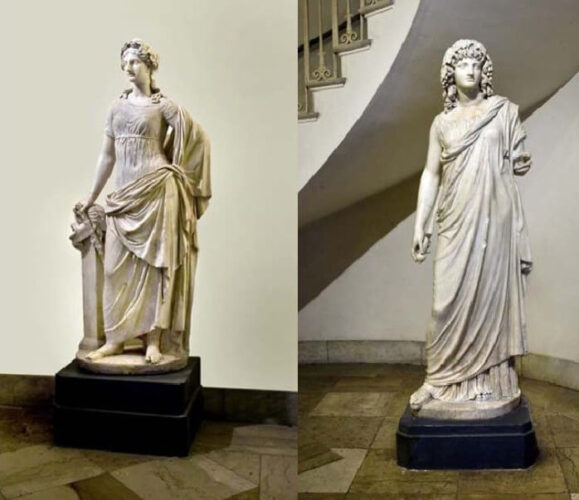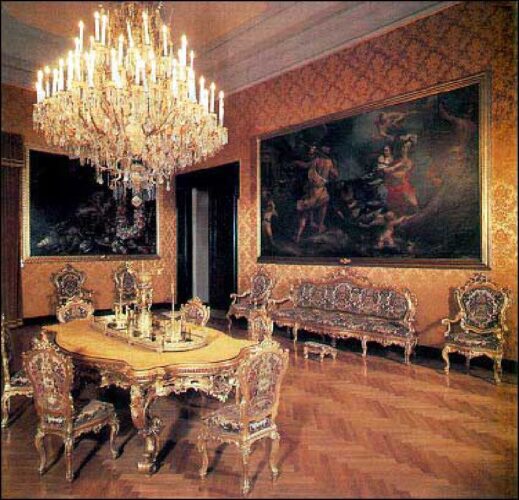The sad story of the furnishings of the Palace of Caserta
These furnishings are still extraordinary despite 200 years of spoliations, thefts and damagings
The Caserta Palace in its history suffered many damages due to man’s hand (wars, thefts and dispersions) and nature (earthquakes). The actual appearance is the result of all this, and the furnishings, although their excellence, is just a part of what was available at the time of the Bourbons , but it has the extraordinary feature to can show you the evolution of style since the late-baroque era to the end of the nineteenth century and the birth of the Art Nouveau style.
CHRONOLOGY OF FURNISHING SPOLIATIONS
During the XVIII century
- 1750. Started the designing of the Royal Palace of Caserta.
- October, 6 1759. Charles of Bourbon leaves the Kingdom of Naples to becomes King Charles III of Spain after the death of his brother. He took away furnishings, some craftsmen and the porcelain factory of Capodimonte.
- Birth of the Neapolitan Republic on January 23, 1799 by Napoleon Bonaparte. The sovereigns fled to Sicily, and lived in the Palazzina Cinese in Palermo, carrying with them part of the furnishings, which after no longer completely came back to the earlier places. The furnishings remained into the palaces of Naples and Caserta was partly stolen and damaged.
During the XIX century
- Joachim Murat became the King of Naples. He imported from France many furnishings and craftsmen to redecorate in Empire-style the royal palaces, removing some of the earlier ones. Dozens of sculptures created for fountains never built, and remained in the warehouses, were taken away from the Palace.
- Ferdinand II’s bedroom was completely burned down because he was believed to have died in 1859 of a contagious disease. According to Martucci, the bed currently present is the one where Queen Maria Cristina of Savoy died in 1836.
- In 1860 the kingdom of the two Sicilies was conquered by Garibaldi and ended the Bourbon era. The Piedmontese employees did the inventory of the contents of all the royal palaces, and so began the almost total withdrawal and dispersion of their content. The story of Queen Mary Carolina’s bidet is famous: into the Piedmont inventory is described as “guitar-shaped object of unknown use”. Since the bidet was unknown by the Savoy royal family, was left in its place and so is still visible into the Queen’s bath. However, there are doubts about the accuracy of this story.
During the XX century
- The bedroom of Ferdinand II was completely burned because they believed that he died in 1859 du to a contagious disease. According to the historian Martucci, the bed now shown is the one where the Queen Maria Cristina of Savoy died in 1836.
- The furniture of the last library room (the rotating table/bookcase and the rotating book easel) are now missing.
- During the Second World War, the city of Caserta was occupied by the Nazis. it is very likely that there have been thefts, also because Hitler gave orders to raid works of art throughout Europe. Afterwards the city of Caserta was bombed by the Anglo-Americans. The palace was damaged, and in particular the Great Staircase and the Palatine Chapel which was devastated. Many art objects were destroyed.
- In 1943 the Anglo-American troops occupied the Palace. Although they had an obligation to protect the building and its contents, local people’s stories tell that soldiers swam in the fountains, shooted the sculptures in the Park to have fun, urinated in royal halls, besmirched paintings and sculptures, left graffiti on the walls , disrupted furniture decorations. Since there were not many controls, the locals said that more of one artistic object disappeared end, and now sometime are sold at international auctions.
- After Italy was proclaimed a Republic, the government ordered furniture to be taken for use in the government buildings of Rome.
- Various works of art were sent to other museums and public offices.
- In the garden of the Quirinal Palace in Rome, there is the “Fountain of Caserta” with three statues taken from the Park in the post-unification period
Some examples of items taken away or stolen
External links







